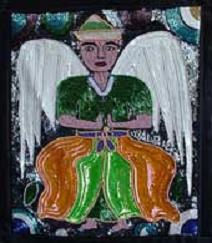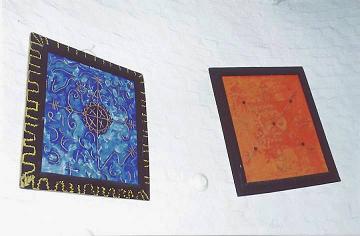
|
Voodoo Rituals
Back Next
|
 |
Practicers of Voodoo are highly devout. Their rituals form an incredibly
important aspect of their religion. Rituals occur fairly regularly, with
different spirits being honored at different times.
Purpose of Rituals
In return for worship and sacrifices, the loas will be generous with the
worshippers, resulting in plentiful rain, good crops, or something else of the like.
This relationship is often described as a contract between humanity and the loas.
Neglecting this contract may result in sickness, poor harvest or even death.
Ogoun and Dambala
Rituals honoring these two very important loas occur only about twice a year,
although frequent gifts are sacrifices are given to these two main spirits.
|
|
Met Tet and Lesser Loas
Met Tet, or "master of the head," is a loa that could be
compared to one's patron saint in Catholicism. The Met Tet
is believed to help in one's personal affairs. A ritual honoring
the Met Tet may result in an improved love life or better health.
Souls and Their Role in Voodoo Rituals.
As previously mentioned, the soul is an integral facet of Voodoo.
In Voodoo beliefs, the soul is made of two parts, the gros bon ange
and the ti bon ange. The gros bon ange, or the "big guardian
angel," is the life force shared by all humans. It enters the body at birth
and leaves at death when it floats back to the Gran Met, or
pool of life force. The ti bon ange, or "little guardian angel"
is the part of the soul that contains the individual qualities of a person.
The ti bon ange is a large part of Voodoo beliefs and rituals.
It leaves the body during sleep so that the person experiences dreams,
and also leaves the body during rituals for spirit possessions.
During a ritual spirit possession, a loa takes possession of a
hounsis, which can be thought of as an assistant priest. In this time
the hounsis' ti bon ange floats free, and if unprotected could be harmed or stolen.
|
|
Voodoo Priests and Their Role in Rituals
Voodoo priests and priestesses, or houngan and mambo, are Voodoo
"clergy." They undergo extensive training to become priests. Often times, the
tradition of being a houngan or mambo is passed down through a family. When they begin
to train as a hounsis, they work closely with a houngan or mambo. Houngans, mambos
and hounsis all have important roles in the Voodoo rituals. As mentioned above, hounsis
are usually those who participate in the spirit possession. They are also in charge of
the animal sacrifice by washing and feeding the animal.
At the beginning of a ceremony, the houngan or mambo traces a veve or special design
on the ground in order to summon a spirit. Prayers and the animal eashing and feeding then occur.
The wild beat of drums then begins and the houngan, mambo, and hounsis dance energetically.
The dancers then seem to be in trances and once they fall to the ground, they are considered
to be possessed by the spirit. The possessed person is then treated as though they are the
spirit, or loa.
At the climax of the ceremony, the animal sacrifice's throat is slit and the blood is drained
into a special bowl. The possessed spirit/person then drinks the blood. After the ceremony,
the worshippers may cook and eat the sacrificed animal, as this is thought to bring good luck.
|

|
|

